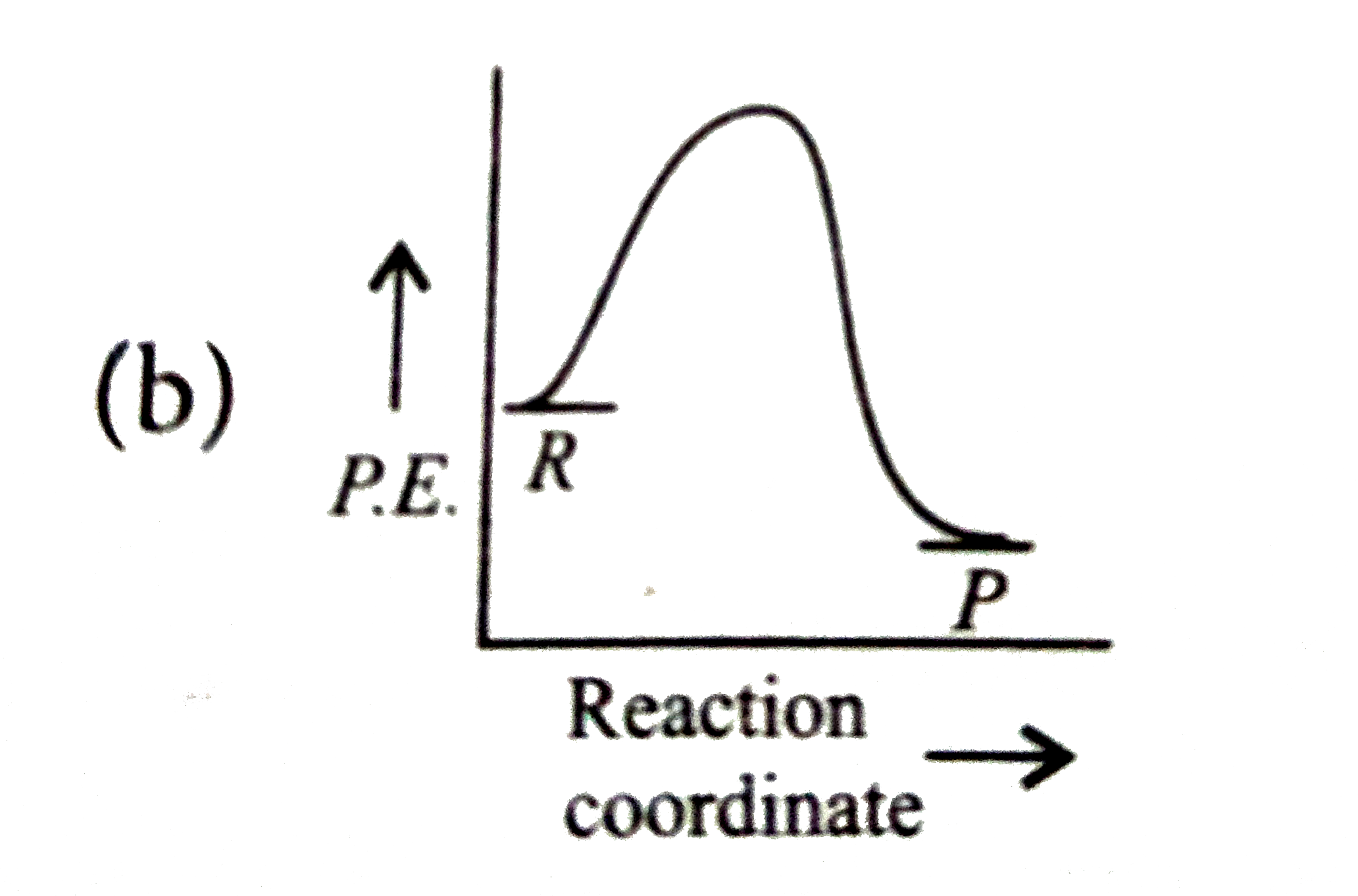For an endothermic reaction energy of activation is Ea and enthlpy of reaction is ΔH (both in kJmol−1). Minimum value of Ea will be
Less than ΔH
Equal to ΔH
More than ΔH
equal to zero
The correct Answer is:C
To determine the minimum value of the activation energy Ea for an endothermic reaction, we need to understand the relationship between the activation energy, the enthalpy change of the reaction (ΔH), and the energy profile of the reaction.
1. Understanding Endothermic Reactions:
- In an endothermic reaction, the products have higher energy than the reactants because energy is absorbed during the reaction. This means that ΔH (enthalpy change) is positive.
2. Energy Profile Diagram:
- Draw an energy profile diagram. The x-axis represents the progress of the reaction, while the y-axis represents the energy.
- The energy level of the reactants is lower than that of the products.
3. Activation Energy (Ea):
- The activation energy is the energy barrier that must be overcome for the reactants to be converted into products. In the diagram, this is represented as the energy difference between the reactants and the peak of the energy barrier (transition state).
4. Relationship Between Ea and ΔH:
- For an endothermic reaction, the relationship can be expressed as:
Ea=ΔH+Ea,backward
- Here, Ea,backward is the activation energy for the reverse reaction (from products back to reactants).
5. Minimum Value of Ea:
- Since Ea,backward is always a positive value (as it requires energy to convert products back to reactants), the minimum value of Ea must be greater than ΔH.
- Therefore, we conclude:
Ea>ΔH
6. Conclusion:
- The minimum value of the activation energy Ea for an endothermic reaction is greater than the enthalpy change ΔH.
Final Answer:
The minimum value of Ea is greater than ΔH.
- In an endothermic reaction, the products have higher energy than the reactants because energy is absorbed during the reaction. This means that ΔH (enthalpy change) is positive.
- Draw an energy profile diagram. The x-axis represents the progress of the reaction, while the y-axis represents the energy.
- The energy level of the reactants is lower than that of the products.
- The activation energy is the energy barrier that must be overcome for the reactants to be converted into products. In the diagram, this is represented as the energy difference between the reactants and the peak of the energy barrier (transition state).
- For an endothermic reaction, the relationship can be expressed as:
Ea=ΔH+Ea,backward
- Here, Ea,backward is the activation energy for the reverse reaction (from products back to reactants).
- Since Ea,backward is always a positive value (as it requires energy to convert products back to reactants), the minimum value of Ea must be greater than ΔH.
- Therefore, we conclude:
Ea>ΔH
- The minimum value of the activation energy Ea for an endothermic reaction is greater than the enthalpy change ΔH.
The minimum value of Ea is greater than ΔH.
Similar Questions
If activation energy, Ea of the reaction is equal to RT then
View SolutionFor a given reaction, energy of activation for forward reaction (Eaf is 80 kJ mol−1.ΔH=−40kJ mol−1 for the reaction. A catalyst lowers Eaf to 20 kJ mol−1. The ratio of energy of activation for reverse reaction before and after addition of catalyst is :
View Solution
Knowledge Check
An endothermic reaction with high activation energy for the forward reaction is given by the diagram
A B
B C
C D
D
For an endothermic reaction, where ΔH represents the enthalpy of reaction in kJmol−1, the minimum value for the energy of activation will be
Aless than ΔHBmore than ΔHCequal to ΔHDzero
(E = activation energy)
Relation between activation energies of above reactions is :AE2>E1>E3BE3>E1>E2CE3>E2>E1DE1>E2>E3
Identify the reaction for which ΔH≠ΔE
View SolutionDimerisation of NO_2, is an exothermic reaction. If enthalpy of reaction is /_\H, then the minimum value of activation energy for forward reaction (E_a) will be
View SolutionIn an exothermic reaction X→Y, the activation energy is 100kJmol−1 of X. The enthalphy of the reaction is −140kJmol−1. The activation energy of the reverse reaction Y→X is

View SolutionAn exothermic reaction, A→B, has an activation energy of 15 kcal mol−1 and the energy of reaction is 5 kcal mol−1. The activation energy in kcal mol−1 for the reaction, B→A is
View SolutionConsider an endothermic reaction X→Y with the activation energies Eb and Ef for the backward and forward reaction, respectively. In general
View Solution
